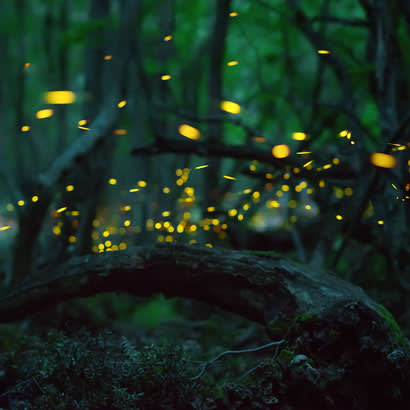
As the days become longer, the chill that’s still in the air may have you wishing for the warmer months and summertime. If you grew up in certain parts of the country, your memory of summer nights as a child probably involved fireflies — or lightning bugs, as I like to call them. Maybe you remember the first time you “hunted” your first firefly by capturing it in your hands or, better yet, a mason jar with holes punched in the top, gleefully handing it to your parents. Watching a jar light up was the best reward, and hopefully, you were kind to them afterward!
Now as an adult, you may not exert as much energy to catch them, but when you see these insects it continues to be a magical experience. Seeing your local park or backyard light up in a symphony of bioluminescence is a thing of beauty!
Take action to help fireflies
There are 2,000 firefly species across the world, and 200 live here in the United States. But sadly, their species is declining. Due to habitat loss, as well as both chemical and light pollution, humans are negatively impacting these nocturnal pollinators. And, some of these species are habitat-specific, which means they could be lost forever if their habitat isn’t preserved. Much of the research around the decline of the firefly is fairly new, but we do know there are steps we can take to help:
- Turn off the lights. Lights at night not only confuse fireflies and can interfere with their reproduction, but also interfere with other species, like birds and nocturnal creatures. For more information, check out the International Dark-Sky Association.
- Avoid using pesticides or chemical fertilizers. These chemicals have negative impacts on many species — especially our glowing friends.
- Cut down on mowing. Fireflies stay on the ground during the day and mowing can disturb them. Try incorporating areas in your parks where mowing is restricted or even eliminated — this helps all pollinators!
- Plant native. Plant native trees and grasses to help support habitat loss — this helps all wildlife!
- Protect marshes and wetlands. Fireflies love humid and moist areas. Incorporate or keep water-rich areas in your parks.
- Leave the leaves. Don’t over-rake or clean up a site too much, since this is where firefly larvae live — you don’t want to throw them away.
- Host a Parks for Pollinators BioBlitz. Take part in this second annual NRPA event to identify areas that provide suitable habitat for fireflies, to learn how to protect their habitat and to educate your community about the importance of these glowing creatures.
Increase awareness with nighttime, educational activities
Some of these suggestions may be difficult to implement across your entire agency, so try creating a night pollinator conservation area. Find an area that already hosts fireflies (and other nocturnal pollinators) and implement these management practices. Activate this space with nighttime programs to bring awareness to these miraculous beetles, while giving your community a new opportunity and appreciation for things that flutter in the night!
You might even try hosting a nighttime BioBlitz! Even if you don’t have an area that is managed for this miraculous glowing bug yet, hosting a BioBlitz can help identify areas where you can create habitat. As park and recreation leaders working to promote conservation practices in your communities, NRPA would love for you to join us this June in promoting and educating your community about the important roles that all pollinators play, regardless of their preference of the sun!
Join NRPA in June to Host a BioBlitz
Park and recreation agencies share other ideas
Park and recreation agencies across the country already are tuning in to the firefly, whether they have always celebrated the species or are newly converted supporters. The city of Nibley, Utah, just created Firefly Park. This 20-acre nature park — specifically built to support the local native species — is centered around allowing the community to view their local celebrities: fireflies! And park agencies around the country host Firefly Festivals to entertain and educate communities — what a great way to spend an evening.
If you are looking for a way to engage and help researchers track fireflies, check out the Massachusetts Audubon and their Firefly Watch program. This citizen science platform monitors fireflies across the country. There are multiple ways to help keep the night sky filled for future generations — whatever you decide, do it for the lightning bug!
Michele White, CAE, IOM, is NRPA’s Conservation Program Manager.


